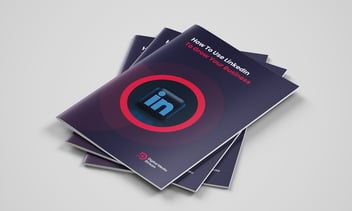2017. It’s truly the age of innovation - from driverless cars and artificial intelligence to robots on Mars and even self-lacing trainers (we definitely want a pair of those!). And big data is behind them all.
Big data is an incredibly important aspect behind so many industries and is helping to revolutionise them all. By being able to collect and analyse data, we can start to see emerging trends in consumer behaviour and use it to further our thinking and our processes - making changes for the better.
In this blog, we take a look at how big data is changing the face of marketing and how you can use it to influence your inbound marketing strategy for the future.
What is Big Data?
Big data. It sounds scary, but we promise you, it’s not as bad as you think!
Essentially, big data is defined as the following:
“Extremely large data sets that can be analysed to reveal patterns, trends and associations, especially relating to human behaviour and interactions.”
So, in a nutshell, it’s any data (think of analytics, data collected from forms, surveys, reports etc.) that you are able to look at and put together fundamental assumptions of the trends you see in that data.
For instance, one way data is used in inbound marketing when creating customer profiles (otherwise known as ‘buyer personas’). Existing data about a business’ customers or clients is pulled through and then analysed. A marketer or an analyst will then look at that data and start tallying up the trends and patterns to put together a picture of what their average customer looks like, such as:
- Average age
- Gender
- Job role
- Income
- Preferences
- Family life
- Pain points/challenges
- And more.
This way, a business can have a better picture of who their ideal customer is and how they can provide the solutions to the challenges they face in an effective way. This is just one way using data can help with inbound marketing.
Rise of the Machines
Don’t worry, robots aren’t on the rampage. We just wanted to take this opportunity to mention an interesting revelation on big data. Namely, that it is already being used alongside artificial intelligence (AI) to grow the use of the platform.
According to a report by Tractica, AI software will grow to $59.8 billion by 2025. This is no surprise considering a vast amount of businesses are already implementing AI tech such as chatbots into their websites.
By combining the use of big data with AI, it could help AI technology vastly in improving how intelligence software learns from human behaviour. Quite an exciting concept for improving your lead generation and marketing analytics.
As technology steadily improves, big data will always be behind it, guiding us to better and new uses (perhaps even those flying cars we were once promised!)
Implementing with Inbound
We’re not saying you need to amass massive amounts of data (hello, GDPR) from the get-go. However, if you’re wanting to improve your inbound marketing strategy, even small data can go a long way. You just need to know how and when to use it.
The best way to start is to help your business define your ideal customer profiles.
The next step would be to understand how to map out your customer’s journey using the data you collect from your website analytics and know how to market at each stage of their journey: Awareness, Consideration and Decision.
 Data can also be used to help you ensure that you’re providing targeted and personalised experiences of your brand for your customers to engage with. Intelligence technology is already embedded into software such as HubSpot’s CRM where you can utilise it to segment your contacts database and use smart-tag content features.
Data can also be used to help you ensure that you’re providing targeted and personalised experiences of your brand for your customers to engage with. Intelligence technology is already embedded into software such as HubSpot’s CRM where you can utilise it to segment your contacts database and use smart-tag content features.
It’s all in the bigger picture of where big data is being used improve the relationship that businesses have with their customers, boosting lead generation efforts and providing an overall client-centric journey.
The more effective, relevant and useful your inbound marketing becomes the more you’ll see this reflected in the data that is fed back to you. It’s a continuous loop that will allow you to harvest and improve on every aspect of your business.
So remember, it’s important to start small with your data and steadily increase as you grow and develop your understanding of how it can work for your business.
Data is Key
Data - be it big or small - is such a vital aspect of day-to-day marketing that few actually realise the bigger impact of it all. Data has the ability to literally change the world.
And that is exactly what it’s doing. Data is what we use to understand changes in behaviours - what we eat, what we watch, when we shop, what we need - and as a result, businesses use this to adapt their strategies time and time again.
So don’t be scared of big data: embrace it with open arms alongside inbound marketing and you’ll be on your way to improving your business growth year-on-year.




